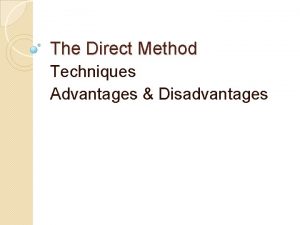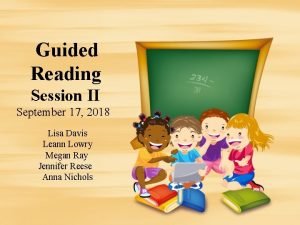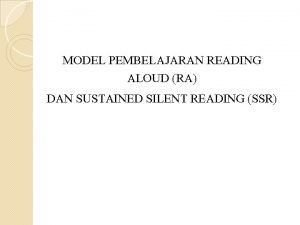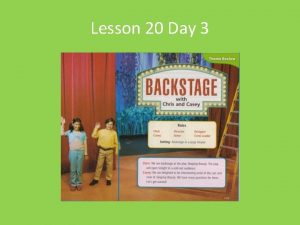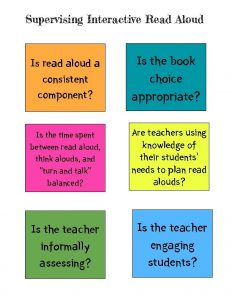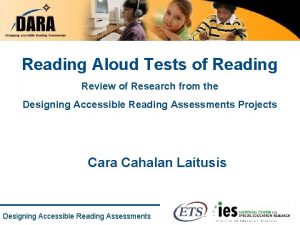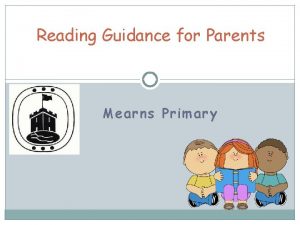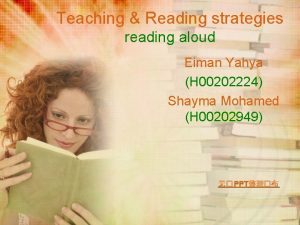P 3 Oral Reading Reading Aloud P A










- Slides: 10

P 3 Oral Reading

Reading Aloud – P. A. C Purpose: Why are you reading? Is it an announcement? Is it a story-telling session? Audience: Who are you reading to? Is it to your classmates? Is it to your schoolmates and teachers? Context: How should you be reading? Seriously? With great expression to express emotions of the characters in the story? You can get P. A. C from the instruction above the reading passage. Example: Imagine that you are telling a story to your classmates.

When reading, bear in mind P. E. A. R. S. P (Punctuation and phrasing) E (Expression) A (Accuracy) R (Rhythm) S (Smoothness)

When reading, bear in mind P. E. A. R. S. P (punctuation and phrasing): • Pause after punctuation marks , . ! ? • Pause at the right places in long sentences http: //www. elementalenglish. com/pausi ng-thought-groups-englishpronunciation/

When reading, bear in mind P. E. A. R. S. E (expression): • Read with feelings • My voice goes up and down during reading. • Change in voice during direct speech • Choose words you want to emphasize. For example: As she reached for the handle, a huge hand grabbed her. Which word would you emphasize? “huge” or “grabbed”?

When reading, bear in mind P. E. A. R. S. A (accuracy): • Read words correctly • Pronouncing the ending sounds • Did not skip / change / add words

When reading, bear in mind P. E. A. R. S. R (rhythm): • Read at the right pace which I speak. • Not too fast or slow

When reading, bear in mind P. E. A. R. S. S (smoothness): • Read clearly and smoothly without hesitations

Daily Practice: Highlight and arrow HIGHLIGHT - the words that are difficult to read or easily misread so that you are careful with those words. Take note of initial consonants such as thr, cr, word endings such as –ed, and plural such as noses - the words that you want to emphasise - emotions such as anger or excitement. • Draw ARROWS to indicate rising intonations especially when a question is asked

Daily Practice: C. U. B. A Mr Lee had hardly entered the house when his son, Jack, rushed up to him, “Dad, you’ve won a prize!” he shouted excitedly. “Really? ” Mr Lee asked in disbelief. “It is for real, Dad!” Jack replied with great excitement.


